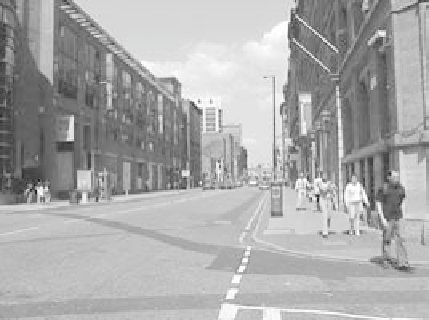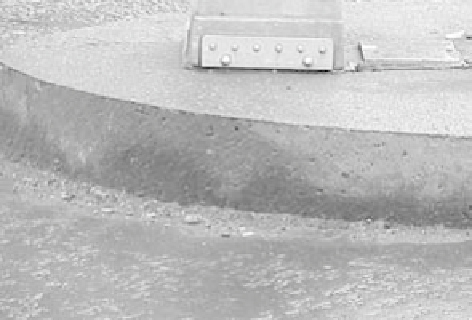Geoscience Reference
In-Depth Information
(a)
(b)
RDS
(c)
(d)
Fig. 6.2
Photographs of the typical environments, and their characteristics, associated with urban sediments. (a) Street surfaces. (b)
Accumulation of road-deposited sediment (RDS) around a traffic island on a street surface. Note the highly variable grain-size of this
material. (c) An urban river, showing the classic engineered and steep-sided nature of such rivers. (d) An urban dock, displaying surface
debris accumulation due to prevailing wind directions.
clear link between high lead intake and intel-
lectual development in children (Needleman
et al. 1979). Partially as a direct result of this
pioneering research, the use of leaded petrol
was phased out in Europe. Following on from
this, the levels for a wide range of metal and
organics contaminant have been studied in
RDS from around the world and this aspect of
urban sediment study is now well-established
(section 6.3.1).
The pressures of water quality regulations,
biodiversity issues and regeneration of water-
side areas led to the second main area of urban
sediment research - aquatic urban sediments. It
has long been recognized that sediments act as
the major vector for the transport of contam-
inants in most aquatic systems (see Chapter 1)
as contaminants are preferentially associated
with the particulate phase. It has also been
well-established that sediments act as a major
store of contaminants (e.g. floodplains and salt
marshes). Such storage, and potential remobil-
ization, is a major issue in urban rivers, canals
and docks, as a result of a legacy of unregulated
domestic and industrial discharge into these
water bodies (Taylor et al. 2003). The study of
aquatic urban sediments has, therefore, become
an increasingly important area, not just as a
research priority, but also for urban pollution
management, sustainable river basin manage-
ment and remediation. These studies have focused
on sediment and contaminant fluxes in urban
rivers, sediment quality in canals and docks, and
understanding the short- to long-term pathways
of sediment-bound contaminants through the
urban environment.














